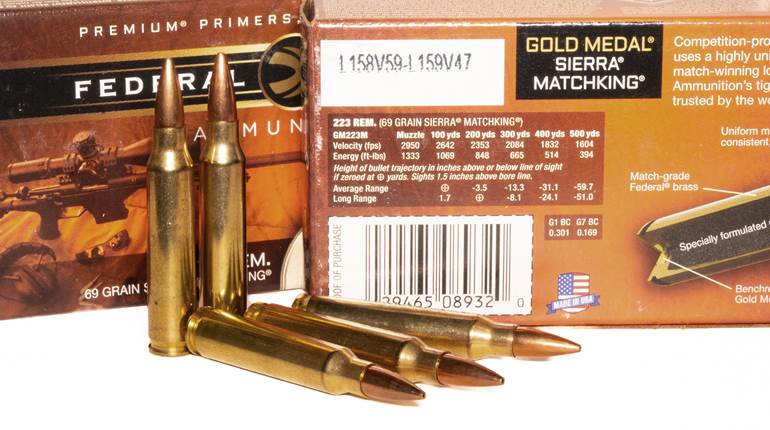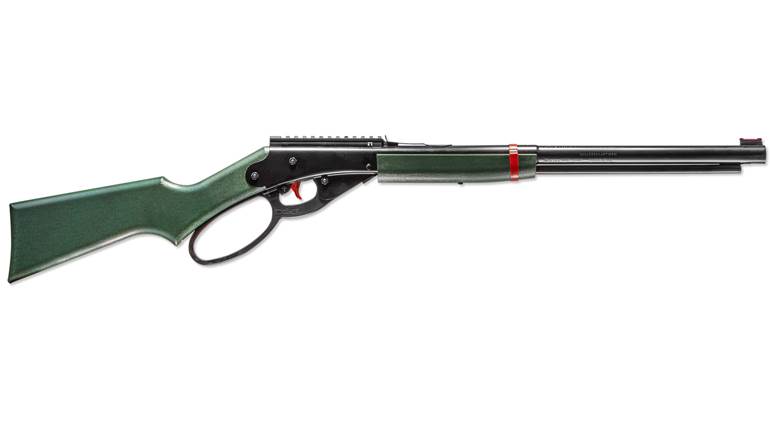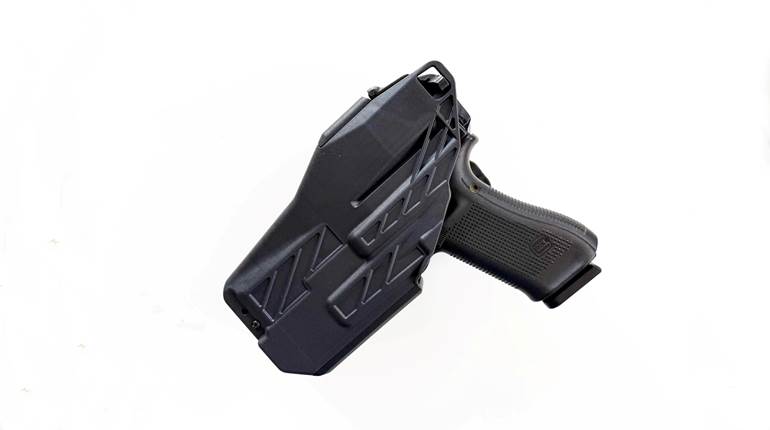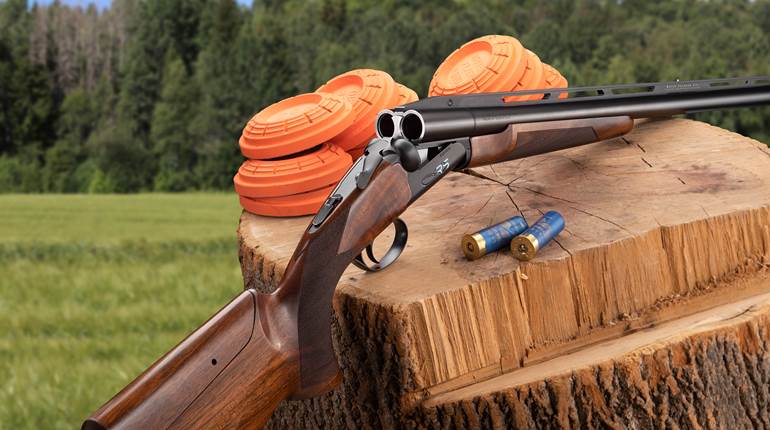
There was a time when the word “rifle” almost exclusively meant a lever-action. The lever-action rifle is an iconic part of America and as much a symbol of the Old West as a worn-out pair of cowboy boots or a set of spurs. Its fame is not just celebrated in the dust of the West, though, as eastern deer hunters have long relied on the lever-action. For the lever-action enthusiast, Rossi offers multiple models, including the unconventional.
Founded in 1889 by Amadeo Rossi, his namesake company is a leading manufacturer of single-shot rifles, muzzleloaders and shotguns; however, Rossi offers a diverse selection of lever-action rifles built around the famed Winchester Model 92 action, too. It has also unveiled a lever-action rifle similar to the Marlin Model 336. Rossi’s lever guns are unusual, but the one covered here is not a rifle at all.
Rossi Ranch Hand
Every now and again a movie gun will capture viewers’ imaginations. Perhaps the best example is the Smith & Wesson Model 29 used by Clint Eastwood in the Dirty Harry flicks. The Model 92, which has also been referred to as the Randall Special or Winchester Randall, was a cut-down lever-action rifle used by Steve McQueen in the series “Wanted: Dead or Alive.” For Western television buffs familiar with the series, this might be the most recognizable movie gun of all.
The original gun was a Winchester Model 1892 rifle with a shortened stock and barrel. Under today’s legal restrictions, gunsmithing one requires BATFE approval and a $200 fee. Because the Ranch Hand is produced at the factory as handgun, it is free from such requirements.
The Ranch Hand is available in .357 Mag./.38 Spl., .44 Mag./.44 Spl., and .45 Colt. The test gun was the .44 Mag./.44 Spl. variant. The investment-cast action is a replication of the famous Winchester Model 92 with the addition of a safety. On the bolt, just in front of the hammer, there is a small, “L”- shaped lever that can be toggled between fire and safe to lock the firing pin.
Like the Rio Grande, the Ranch Hand is fitted with a walnut-stained hardwood buttstock and fore-end. It has two barrel bands: one at the front of the fore-end and another 1/2-inch rearward of the muzzle. There is no means to attach a sling; however, there is a big-loop lever, and the butt of the stock has a thick, flat steel plate. On the left side of the action is the classic saddle ring with a leather tie. The handgun is equipped with a semi-buckhorn rear sight that is adjustable for elevation and windage, and the front sight is a tall, thin blade topped with a 0.090-inch brass bead.
The Ranch Hand was accurate and operated without a hitch. There are some shootability issues with the design—more on that shortly—but the only real problem with the firearm was the sights. They could not be adjusted to match point of aim with point of impact.
At 25 yards all of the loads tested impacted about a foot above the point of aim, even with the rear sight bottomed out. This leaves the user with three options: Install a taller front sight; cut the notch in the rear sight deeper; or aim low. This all might seem detrimental to the performance of this handgun, but let’s be realistic—it’s more for novelty than practicality.
The reason I believe so is that it’s not the easiest firearm to shoot. The stock is too short to shoot it like a rifle, and the pistol grip is almost too straight to shoot it like a traditional handgun. One can employ a sort of push/pull hold and bring the gun up like it has an imaginary stock. While this is not the most stable shooting position, I was consistently able to get hits on 16-inch steel plates out to 50 yards. With practice this might be the best option for accurately shooting a Ranch Hand off-hand.
For me, the most fun way to shoot the Ranch Hand was like it was most often used on-screen: Brace the buttstock against the hip, hold the fore-end down with the off-side hand, pull the trigger and rack the big loop lever. The faster you do this the more fun it is. Using this method I could ventilate a silhouette target at 7 yards at the pace of about one hole per second. The problem here is that you are point shooting, and that takes practice, too.
Shooting the Ranch Hand from the bench was comfortable when using the .44 Spl. loads, but when stoked with DoubleTap’s .44 Mag. loads, it got uncomfortable. It was like I actually had a hold of a horse’s leg—more specifically, one that did not want me holding it. This experience did demonstrate the only practical use I’ve found for the big-loop lever—it allowed a two-hand grip around the wrist of the stock similar to the way a shooter would hold any other big-bore handgun. Still, DoubleTap’s 240-grain Keith bullet at almost 1,700 fps was a handful. After firing the requisite 25 shots—five consecutive, five-shot groups—I wanted no more.
This did, however, show that the Ranch Hand could be fired with a two-hand grip like that used with a traditional handgun. I tried this from the standing, off-hand position and accuracy was fair. Again, this is something you would need to practice. Regardless, if you plan to shoot full-power .44 Mag. loads you might want to start building up your grip and forearm strength now.
Of course the real appeal of the Ranch Hand is more nostalgic than practical. Sure, it could be used as a defensive firearm. It could also be used around a ranch, I suppose, if ranges were kept modest and if the sights were regulated. Mostly, it’s just a lot of fun to shoot, especially with .44 Spl. loads. Based on my experiences testing the Ranch Hand in .44 Mag., I believe one chambered for the .357 Mag./.38 Spl. would be as comfortable to fire as it would be fun.
The lever-action rifle might be the most iconic American firearm of all time. It has a coast-to-coast heritage and has been trusted for more than a century. Just when you thought that everything new had to be built on an AR-15 platform, these two new guns from Rossi offer a new and an old twist to the lever-action, rounding out its line of lever guns with a shotgun and a handgun.
Now, if you will excuse me, I think I’ll put on my cowboy hat and boots and go to the range.
Importer: Rossi; (306) 474-0401; www.rossiusa.com
Model: Ranch Hand
Action: repeating lever-action, center-fire handgun
Caliber: .44 Mag./.44 Spl. (tested), .357 Mag./.38 Spl.
Capacity: six
Receiver: investment-cast 4140 carbon steel; blued
Stock: oil-finished deluxe hardwood
Barrel: 12"; button-rifled; six-groove, RH, 1:30" twist
Sights: buckhorn rear; post front
Trigger Pull Weight: 4 lbs., 4 ozs.
Overall Length: 233⁄4"
Weight: 4 lbs., 9 ozs.
Suggested Retail Price: $536






































